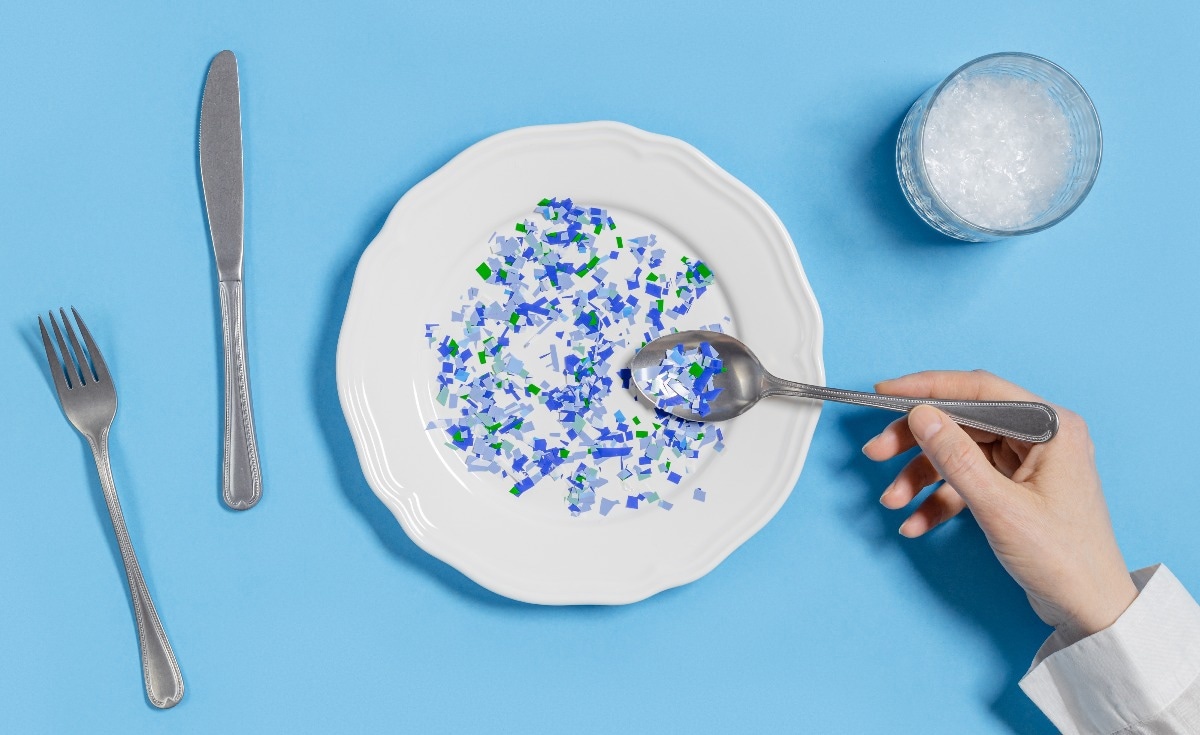Global plastic production has increased significantly over the past few decades and, currently, it ranks third in the global municipal solid waste. The packaging wastes from take-out food delivery, such as plastic containers made up of polypropylene (PP) and polystyrene (PS), are among the highest contributor to plastic accumulation in the environment. These plastics undergo fragmentation and weathering and are transformed into smaller pieces. Presently, an increase in microplastics (diameter of less than 5 mm) in the environment has raised concerns in the global scientific community and environmentalists.
 Study: Microplastics in take-out food: Are we over taking it? Image Credit: YRABOTA/Shutterstock
Study: Microplastics in take-out food: Are we over taking it? Image Credit: YRABOTA/Shutterstock
Background
The ubiquitous presence of microplastics (MPs) in the ocean, soil, glaciers, deserts, and most importantly, in foods and drinking water has raised concern. MPs have also been detected in human cancerous lungs, blood, feces as well as the placenta. These findings suggest that when an individual is exposed to MPs through diet or inhalation, they are subjected to endangered health.
Several studies have indicated the presence of MPs in seafood, especially in bivalves. There is a scarcity of data regarding its presence in everyday food, such as rice and meat. Fast-paced lifestyles and rapid economic development have popularized take-out food substantially.
The rapid increase in online take-out business has been a convenience for people, particularly during the coronavirus disease 2019 (COVID-19) pandemic, to order a variety of food at a low cost. Nevertheless, due to the lack of proper supervision, freshness of ingredients, the safety and quality of take-out food containers, and proper cooking and cleaning approach suffers. Although MPs have been detected in take-out food containers, data on their presence in food is unavailable. It is imperative to determine the level of MP exposure in humans through take-out food.
In a recent Environmental Research study, scientists detected and measured MPs directly from take-out food, i.e., solid foods and beverages, obtained from South China. They further determined its abundance and characteristics in different take-out food. The factors associated with MP abundance were determined along with the number of MPs ingested through take-out foods, by consumers.
About the study
Take-out food samples were collected from Tianhe and Panyu districts of Guangzhou, a hub of colleges and universities. Many students order take-out food from nearby food stores, using online apps (Meituan and Eleme). Some of the common types of food ordered through the app were solid food that included rice, noodles, beans, meat and vegetables, and beverages, such as bubble tea and coffee.
The take-out food samples were subjected to the digestion process in a water bath and were filtered. This filtrate was allowed to dry at room temperature and was used for various analyses. Similarly, beverage samples were treated using standard protocol for further analysis. These dried samples were initially studied in microscopes to detect and characterize MPs.
Study findings
More than one hundred take-out food samples were collected and analyzed in this study. MP abundance was found to vary in tested food samples following its storage conditions before cooking, food types, and cooking methods. However, no difference in MP concentration was found based on food packaging materials.
Before cooking, rice is commonly packed in polyethylene (PE), polypropylene (PP), polyethylene terephthalate (PET), and paper bags. The MPs on the surface of the plastic packaging could have peeled off, which were detected in uncooked rice. Other foods, such as noodles, meat, vegetables, bean sprouts, and bubble tea that cannot be stored for a longer period, are often wrapped in plastic packages and stored in a refrigerator for short periods.
A relatively high level of MP was found in food stored at room temperature for a prolonged period compared to those kept frozen or refrigerated for short periods. These findings are consistent with previous studies that indicated fewer microplastics were released into the food stored in plastic containers at low temperatures. MPs in beverages might be introduced from the water source.
Among the containers used to store rice, relatively more MP abundance was detected in rice stored in PS containers. Additionally, differential physical characteristics of MPs, such as shape, size, and color, were found to be based on the type of take-out food. Raman spectroscopic study showed that PE/PP, PE, PET, PP, and polystyrene (PS) were the common types of MPs. Consumers of take-out food abundantly ingested MPs. For instance, an adult who ordered take-out food 1-2 times each week, typically consumed 170‒638 MPs.
Conclusions
This study revealed that MPs ingested by humans from drinking water and seafood are comparable to MP consumption after a week of consuming one take-out food by an adult. MPs that are present in take-out foods not only come from the food container but also from cooking methods and food types. The authors recommended that the take-out food must be stored in glass containers and that people must avoid fried or roasted take-out food.